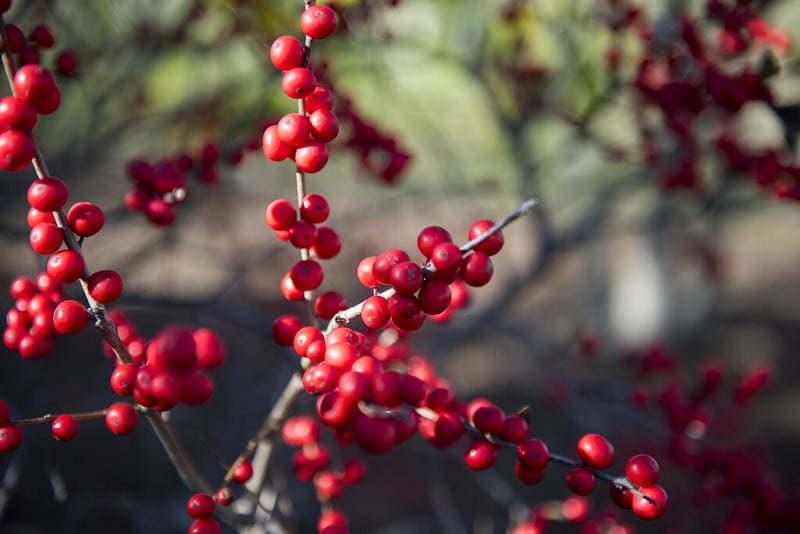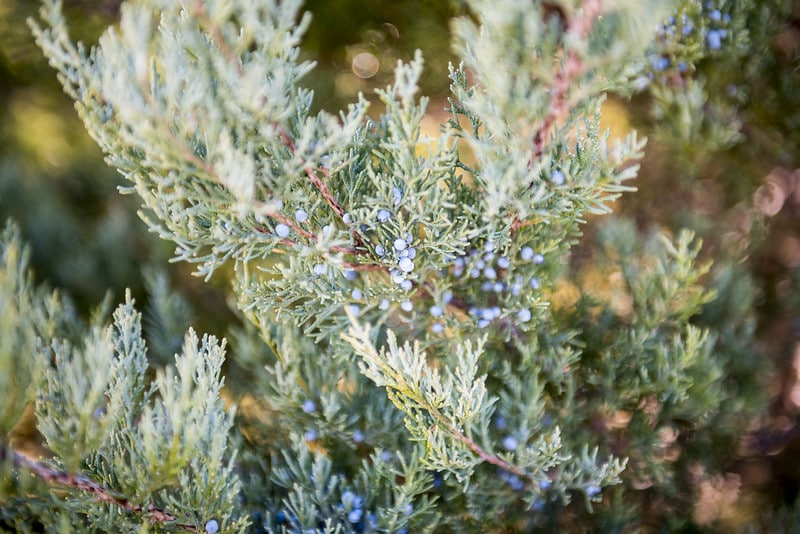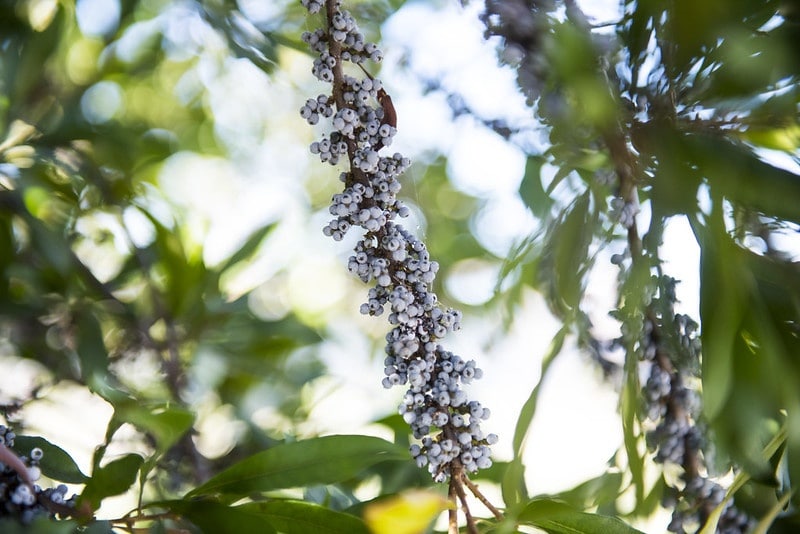Habitat at Home: Berry Helpful Winter Plants for Wildlife
During winter months, berries are one of the main food sources for birds and other wildlife. Growing plants that yield colorful berries while others lie dormant may provide fantastic wildlife viewing, visual interest, and enhance the biodiversity of your yard!
Many native plants in our region provide fruit during winter. They also meet the needs of local wildlife requiring less maintenance, watering, fertilizing, and insecticides than nonnative species.
Here’s our top ten list of native plants that are just as beautiful in spring as they are helpful in winter!
1. Winterberry Holly (Ilex verticillata)

This plant often goes unnoticed in a summer garden, but starts turning heads as soon as its leaves drop and berries ripen during autumn. Branches displaying this bright red fruit may attract mockingbirds and robins.
2. American Beautyberry (Callicarpa Americana)

These berries ripen during September and October, lasting into late fall. For many birds, it’s comparable to candy, and it’s a favorite among cardinals, mockingbirds, finches, and woodpeckers.
3. Eastern Redcedar (Juniperus virginiana)

Eastern Redcedar is a dense coniferous evergreen tree and a species of juniper. Its juniper berries serve an important purpose during winter as a food source for many birds. This plant is also a pioneer species, meaning it easily adapts to a variety of environments. These hardy adaptations allow it to grow in poor soil, colonize barren landscapes, and even flourish in ecosystems disrupted by fire!
4. American Mistletoe (Phoradendron leucarpum)
People seem to get the urge to kiss when they stand beneath it. Mistletoe produces white berries during winter months. It’s also hemiparasitic, meaning it grows on the surface of a host plant for structural support, drawing its moisture and nutrients from the air and water of the host. On occasion, Mistletoe can harm a tree and cause deformities, but it will rarely kill the host. It may populate into tree canopies by distribution of its sticky berries, which birds transport via beak. This plant is difficult to start growing, but if it is already present, you might consider leaving it, as it does prove beneficial to wildlife. We don’t suggest trying to grow this plant, but if it already exists, wildlife will surely thank you! While kissing under the mistletoe is perfectly acceptable, consuming the plant or its berries is not a good idea!
5. Wax Myrtle (Morella cerifera) a.k.a. Bayberry

This small evergreen tree or large shrub is adaptable to a variety of habitats. Its female flowers develop into fruiting berries with a naturally shiny coating. Flowering from late winter to spring, it will bear fruit between late summer and fall. Keep in mind, this plant is observed to not recover well from persistent snowdrifts.
6. Sugarberry (Celtis laevigata) a.k.a. Hackberry
Sugarberry produces berries that turn orange-red to dark purple when ripe in early fall. Popular among robins and mockingbirds, it grows best primarily along streams and in moist soils on floodplains.
7. American Holly (Ilex opaca)

Holly berries ripen and turn red during fall and persist through winter months. They serve as a festive holiday feast for Cedar Waxwings, deer, squirrels, chipmunks, and foxes, whom will happily disperse the seeds.
8. Common Snowberry (Symphoricarpos albus)
Snowberry can grow in a variety of habitats. It’s a medium to large sized shrub with white berries very much coveted by grouse, grosbeaks, robins, and thrushes during the winter months.
9. Coralberry (Symphoricarpos orbiculatus) a.k.a. Buckbrush

Coralberry is a relative of Snowberry and is part of the Honeysuckle family. Fruiting between late fall and early spring, it bears clusters of coral-pink to purple berries that remain throughout the winter. It is a great choice for a woodland garden!
10. Possumhaw (Ilex decidua) a.k.a. Deciduous Holly

Fruiting occurs between early fall and early spring. It’s often used as a winter ornamental plant for Christmas decorations due to its bright red and perfectly round berries. Unlike American Holly, it’s leaves are round and smooth without prickles. Many species of wildlife enjoy this merry and brightly colored fruit!
Planting between late fall and early spring during dormancy will sow the best results, as it allows more time to bulk up their existing root systems and take advantage of the abundant rainfall. Consider planting these colorful berries to spice up your yard while sustaining birds and other wildlife this winter!
Habitat at Home is a monthly segment dedicated to providing you with tips to make your yard and home a better habitat for native plants, animals, and insects. Written by Rachel Hess.